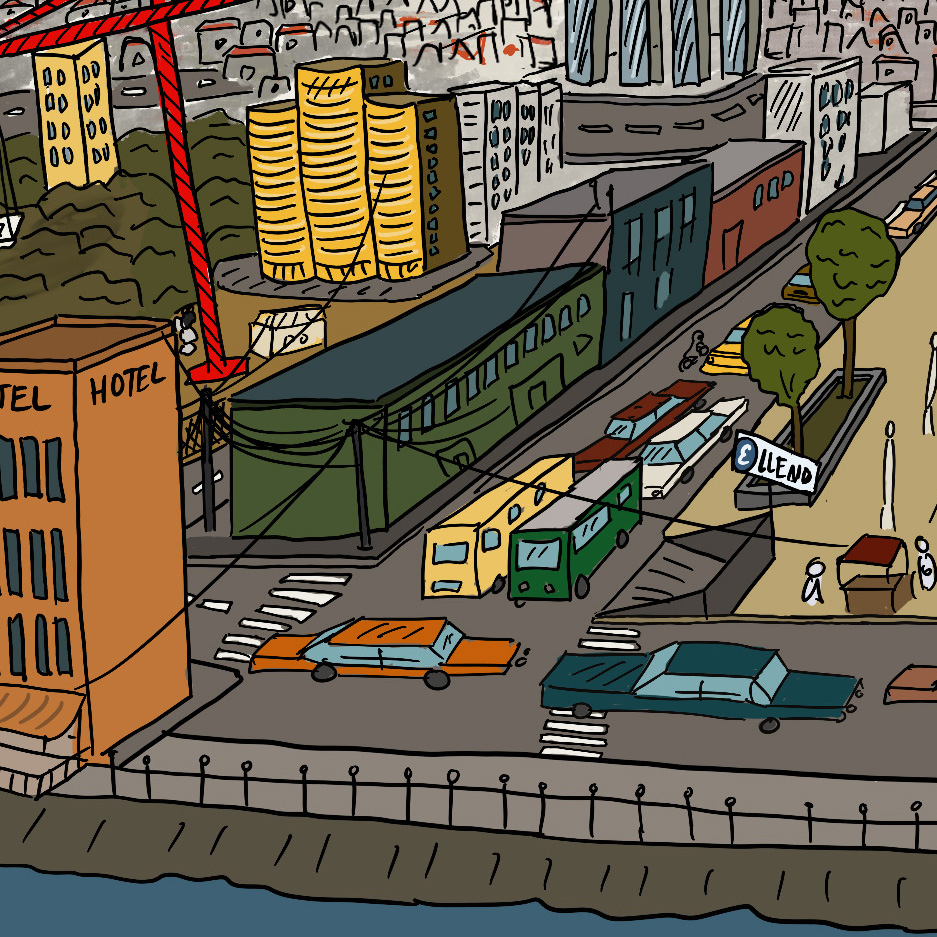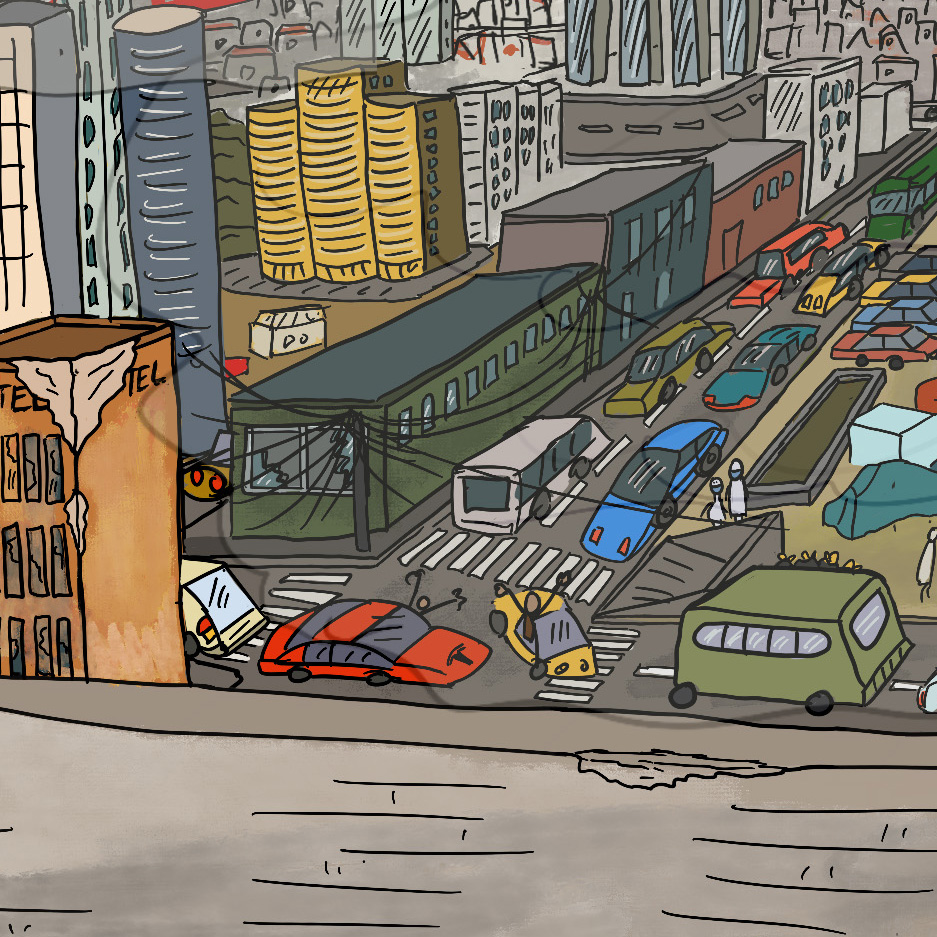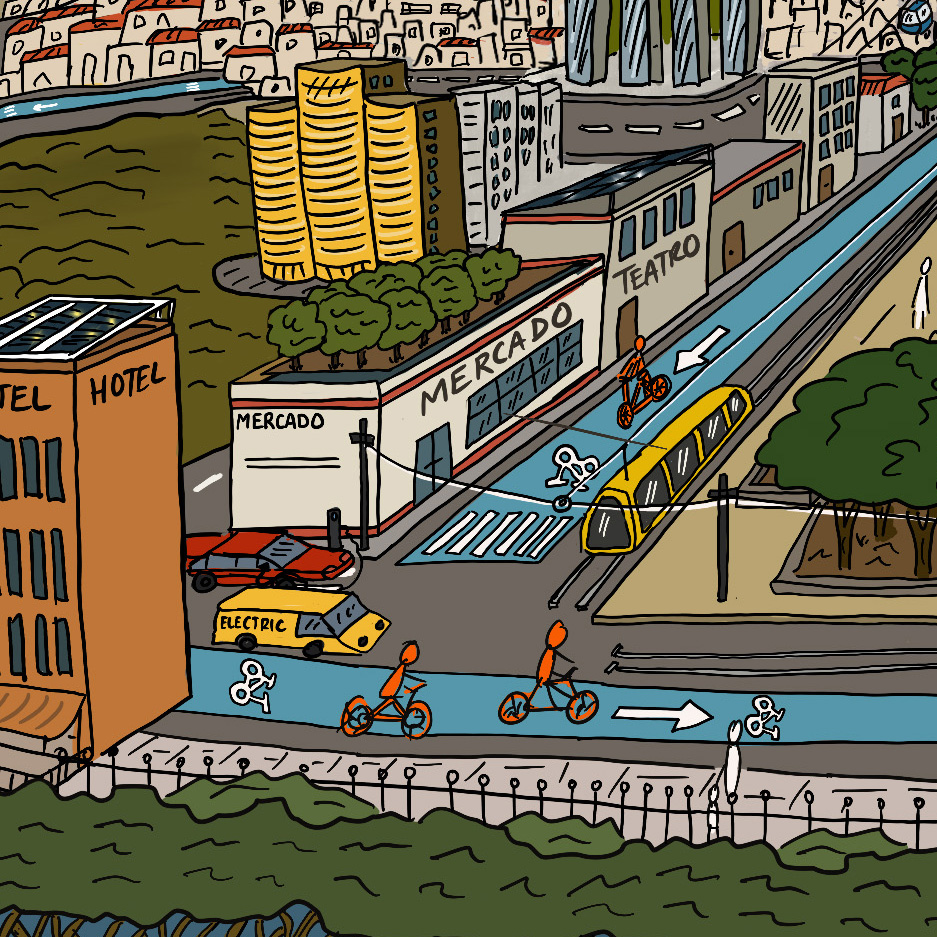
Present. Traffic and transport within the urban area.
Public transport is dominated by cars and motorcycles, with some buses visible. Delivery vans are scattered throughout.
There are parking lots in the plaza that are quite full, but are still orderly.
Power cables around the street run overhead, so trees need to be cut back so as not to interfere—the priority is the power cables.
Non-car traffic is at a disadvantage, and must weave amongst pedestrians. Car parking takes up a lot of city real estate and increases congestion.

